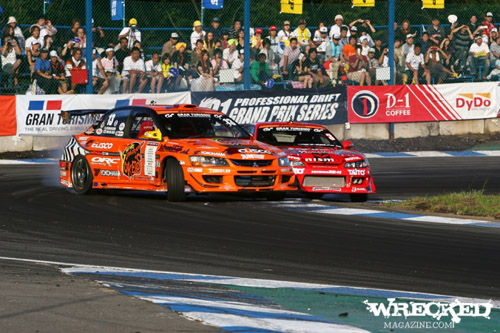,
 |
| Does this shape look familiar? What do you think it produces a lot of? |
If you read historical accounts of racing in the old days you will hear stories from racers saying things like they could steer from lock to lock on the Mulsanne Straight at Le Mans without the car reacting. Even modern racers with engineered aerodynamics sometimes have problems; witness the blowovers in modern racing of LMP GT1 cars, NASCAR and Bonneville racers.
Because of its huge influence on vehicle dynamics and performance, most of the appendages that you see sprouting on current time attack cars are all done in the pursuit of reducing lift and even creating traction enhancing downforce on a shape that naturally produces a great deal of lift.
 |
The other aerodynamic effect that you have to deal with on a car’s body when passing through the air is drag; drag is a complex retarding force that acts on the car’s body moving in a freestream flow. For a car, the engine’s power must overcome the force of drag. Drag slows you down, thus the less drag the better. Basically there are three types of drag, wave drag, induced drag and viscous drag.
 |
| This shows very clearly why a basically shaped car’s body makes lift. |
Wave drag and induced drag are called pressure, profile, or form drag and are caused by the forces required to move the air out of the way to make room for a body passing through it. Viscous drag is caused by the friction of the air passing over the body. Reducing a car’s drag is pretty important; the drag forces are proportional to the square of the speed which means that when you double the speed, drag quadruples!



